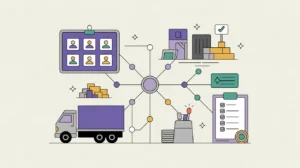What Does Program Visioning Involve?
Program visioning is the stage where nonprofits translate evidence and context into a clear sense of purpose. It connects what research has revealed about needs and opportunities with the organization’s mission, values, and capacity. Visioning is about answering: What change do we want to see, for whom, and why does it matter?
This stage is both analytical and aspirational. It requires interpreting evidence, listening to community voices, and aligning with global or national priorities. The outcome is not yet a detailed program plan but a focused direction. It presents a definition of the problem to address, the opportunity to seize, and the long-term impact to pursue.
Good program visioning avoids the trap of chasing donor trends or adopting ready-made solutions. Instead, it articulates a distinct mission-driven stance. It frames the “north star” of the program in ways that inspire staff, reassure funders, and mobilize communities. Without clear visioning, programs risk drifting, fragmenting, or duplicating existing work. With it, programs establish the shared purpose needed to guide design, development, and delivery.
What Competencies are Associated with this Role?
Program visioning depends on the ability to interpret research, connect ideas, and translate them into a shared sense of direction. Key competencies include:
- Interpreting research findings into actionable priorities
- Facilitating workshops with staff, boards, and stakeholders
- Defining target populations and communities of focus
- Framing problems and opportunities with clarity and precision
- Aligning organizational mission with external needs and donor priorities
- Articulating long-term impact goals and “north star” outcomes
- Building consensus among diverse stakeholders
- Using participatory methods to include community voices in visioning
- Drafting vision statements and strategic framing documents
- Identifying risks, opportunities, and strategic fit
How Might AI and Automation Help this Role?
AI can accelerate program visioning by enhancing analysis and communication. Opportunities include:
- Generating draft problem statements from research data
- Identifying global or national priority alignments using AI policy scans
- Summarizing stakeholder feedback from multiple sources
- Visualizing impact pathways or theory-of-change drafts
- Analyzing gaps and overlaps with existing interventions
- Translating visioning outputs into donor-ready language
- Facilitating online participatory workshops with AI transcription and synthesis tools
What are the Roles by Experience Level?
Visioning involves voices across the organization, but responsibilities often distribute as follows:
- Entry: Program Assistant, Research Associate – support data collation, draft summaries, manage visioning workshop logistics
- Mid: Program Officer, Strategy Analyst – interpret findings, contribute to drafting problem statements, facilitate small group discussions
- Senior: Program Manager, Strategy Lead – shape visioning process, align with mission and donor landscapes, secure leadership buy-in
- Executive: Executive Director, Chief Program Officer – articulate the final vision, represent it externally, integrate into organizational strategy
How Transferable are the Skills from this Role?
The skills developed in program visioning transfer well into strategy, leadership, and advocacy roles. Within nonprofits, they apply to organizational planning, donor relations, and partnership building. Beyond nonprofits, they map onto corporate strategy, public policy, consulting, and innovation labs. Visioning strengthens competencies in facilitation, consensus building, strategic framing, and communication. These are all valuable in roles that require leading diverse groups toward shared goals. By cultivating both analytical and relational skills, program visioning prepares professionals for leadership pathways inside and outside the sector.







